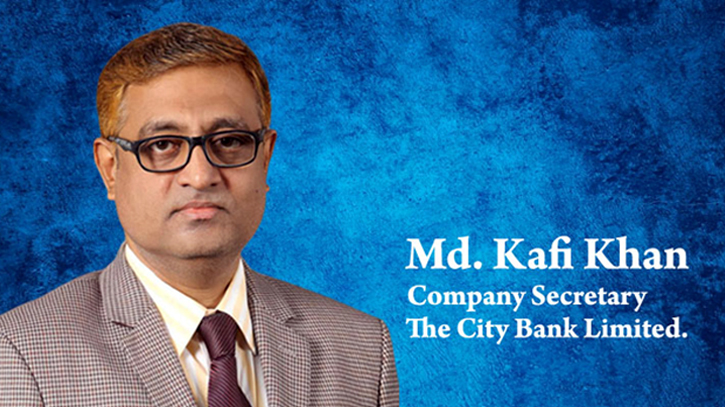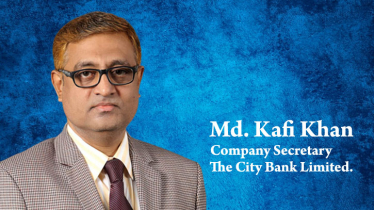
Employee turnover widely used and common in business circles. So far, focus should on the causes of employee turnover. The key factors of employee turnover; determine the extent to which the identified factors are influencing employees’ turnover. Human resource is considered to be the center of all development processes of economy. But today’s competitive business scenario is deteriorating social conditions of human resources, hence causing employee turnover. The “seeds” or initial causes of turnover, arising out of the frustration related to budget cutting, hiring freezes, layoffs, and lack of development funds and opportunities, are more likely to be sown at such times. High turnover rate is problematic and have a negative impact on an organization’s performance.
Organizations spend a lot on their workforces in terms of orientation and training, developing, preserving them in their organization. Therefore, administrators at all expenses must reduce worker’s turnover. Although, there is no ordinary context for understanding the personnel turnover procedure as whole, a wide array of aspects has been initiate useful in initiating employee turnover Kevin et al. (2004). Therefore, there is need to change occupied understanding of the employee turnover, more especially, the sources what defines employee turnover, effects and policies that superiors can put in place decrease turnover. With globalization which is cumulative competition, organizations must carry on to develop physical goods and offer services which are constructed on approaches formed by employees. These employees are particularly essential to the organization since their value to the organization is basically intangible and not easily pretend Meaghan. Managers should control employee turnover for the benefit of the organization success.
The works on employee turnover is divided into three groupings: sources of employee turnover, effects of turnover. Majority of researchers that had donated to the study of stress were of the views that job stress was as effect of the interaction of workforces and the situation of work although views varies about the reasons and consequence however, it was established that stress is a function of individual physical characteristics and employed conditions and the strategies to reduce turnover. The differences in individual features such as personality and managing style are the most important causes in expecting whether definite job conditions will outcome in stress or not, in other words, what is stressful to one person may not be stressful to someone else. In the same vein, some managers accept that stressful operational conditions are the essential elements organizations must use to turn on burden on workers and set asides health concern to persist creative and cost-effective in today’s economy although studies related with this mind set and trust predictable undesirable outcome such as absenteeism, tardiness, objective to quit etc. which cannot be creative or gainful in today’s economy. It is suggested is that job stress attitudes hazard to the health of employees and in the long run the productivity of the organizations as well as the existence of the organizations and considering the fact that banking atmosphere is uncovered to many work types as well as contact with different groups of people cumulate to inherent threat that can be considered as stressors. Hence, the study into the place of job strains in the worker’s turnover with orientation to the banking sector of the economy.
In order to cope with the changing trend as well to provide effective and efficient service to the customer implementation of advance technology has changed the face of banking. Installation of ATM machine, e-Banking, computer implementation and lot many inputs have changed the work patterns of the bank employees. Directly or indirectly these reforms in policy and technology in banking sector has deteriorated the social, economic and psychological sphere of the bank employees in Bangladesh as well. Although there is no standard framework for understanding Employee’s turnover process as whole, a wide range of factors have been found useful in interpreting employee turnover. The pattern in Indian banking sector is also influenced with the same factors such as lack of training, poor working condition, workplace conflict, ineffective leadership etc.
Employee turnover is a ratio comparison of the number of employees a company must replace in a given time period to the average number of total employees. A huge concern to most companies, employee turnover is a costly expense especially in lower paying job roles, for which the employee turnover rate is highest. Turnover refers to the amount of movement of employees in and out of an organization, normally present in terms of the turnover rate gave the meaning of employee turnover as the discontinuance of membership in an organization by the person who received monetary compensation from the organization. Turnover as the movement of employees out of the organization. Employees turnover means the rotation of workers around the labour market, between organizations, jobs and careers.
Many factors play a role in the employee turnover rate of any company, and these can stem from both the employer and the employees. Wages, company benefits, employee attendance, and job performance are all factors that play a significant role in employee turnover. It is suggested two factors that are related to the employee's progression through successive stages of withdrawal. One factor reflects the employee's evaluation of the organization's future expected value and the tension associated with the employee's present work conditions. In turnover process everyone usually points out one factor for their turnover choice, but there are always more factors on the back hand that works as push-cart or driving force for that factor. Although, there is no standard framework for understanding the employees turnover process as whole, a wide range of factors have been found useful in interpreting employee turnover. It was found that employee goal setting; career growth, work environment, job satisfaction; training and development are the foremost decisive factors and very strong predictors of employee turnover intention. Hence keeping in mind the economic context following few factors was deliberated in order to access employee turnover in banks.
Work Environment: If working conditions are substandard or the workplace lacks important facilities such as proper lighting, furniture, restrooms and other health and safety provisions, employees will not be willing to put up with the inconvenience for long time. Organizational instability has been shown to have a high degree of high turnover. Indications are that employees are more likely to stay when there is a predictable work environment and vice versa. In organizations where there was a high level of inefficiency there was also a high level of staff turnover. For employer losing a single key worker may decrease the like hood of project success and investor confidence can be reduced in the company. Main causes of Turnover are salaried working environment and security of job. Turnover particularly arises from unhappiness from job place. In contrary employee also pushed to leave job due to the dissatisfaction in their present workplace.
Job Stress: High rates of mergers, acquisitions, increasing economic interdependence among countries due to globalization, technological development, and restructuring have- changed the organizational work over the last few decades have resulted in time pressure, excessive work demand, role conflicts, ergonomic insufficiencies and problematic customer relationship are causes of stress. It also considers stress as an environmental stimulus to a person, or an oddity between individual and environment. The experience of job related stress (job stress), the range factors that lead to job related stress (stressors), lack of commitment in the organization; and job dissatisfaction make employees to quit.
Compensation (Salary): one common cause of high employee turnover rates is low pay and benefits packages. When a worker is employed in a low-wage position with limited benefits, there is little incentive to stay if a similar employer offers even a slightly higher rate of pay. While lower paying job roles experience an overall higher average of employee turnover, they tend to cost companies less per replacement employee than do higher paying job roles. However, they incur the cost more often. For these reasons, most companies focus on employee retention strategies regardless of pay levels. Workers who make more, but whose salaries fall short of the going market rate, may feel undervalued at their current companies and look for a company that will pay them what they're worth. It is arguable that employees quit from organization due economic reasons. The most common reason for employee turnover rate being so high is the salary scale because employees are usually in search of jobs that pay well. Low pay is good reason as to why an employee may be lacking in performance. Unequal or substandard wage structures fall under this category as well. When two or more employees perform similar work and have similar responsibilities, differences in pay rate can drive lower paid employees to quit. Ina like vein, if you pay less than other employers for similar work, employees are likely to jump ship for higher pay, if other factors are relatively equal.
Management versus employee relationship matter: Nature of management influence the individuals in terms of values of organization, image and existence or firm. A poor relationship with the management can be an important reason for the employees to leave their jobs. It is relatively rare for people to leave jobs in which they are happy even offered by higher salary elsewhere. Employer-employee relationship plays a vital role on turnover. Lack of role clarity by management can lead to employee turnover supervision is an extrinsic factor and a DISSATISFIER as well as a DEMOTIVATOR just like pay. This is because employees tend to perform better when they have under less supervision and freedom to exercise initiatives, judgment and self-approach to work.
Professional and career growth: Career progress creates stress on employee’s understandings of the worth of his or her career prospects. Obstacles in career development can appear at any time during an employee’s employment period which serves as stressor for them. These stressors can include an array of problems like being stuck at a position, without any hopes of progress or threats of downsizing. Career growth is much more important than salary in Europe or America but it is counted equivalent to salary in Asian context. “Moving Up or Moving Out” counts career growth as basic for turnover. High employee turnover could also be due to no potential opportunity for advancements or promotions. Employees prefer other companies which may provide them with higher posts and increased compensation packages.
Concluding evidential thoughts to look upon: Prime factors for employee turnover in our respondent banks are job satisfaction and work environment. The high significance level for both variables show that, whether there is a salary compensation or not, employees have a gigantic desire to opt for new ventures in need of better work environment and job satisfaction. Comparative to above two variables the career development is having lesser but a quiet considerable significance. The people who counted career growth as their prime force for turnover have put a saddle on availability of opportunities and management relations as sub-prime forces. But they turn over for new venture for better wages or salary compensation. So the good management can hold the employees for a longer period, by giving them satisfaction with respect to supervision and giving them much autonomy so that may not seek for alternates too often. In current situational study the possible solution for retaining career oriented employees would be to give them autonomy and ease from the management side. Extremely harsh attitude of the management and excessive workload will open the doors of alternate opportunities for career oriented employees.
Employees do always seek for alternates because everyone wants to get flourished. Further noticeable no real mean difference exists as between the new employees and old employee’s responses towards turnover factor. So some pertinent matters should to know and to resolve i.e. Whether there is a significant relationship between work environment and employee turnover, whether there is no relationship between career growth and employee turnover, Whether there is a significant relationship between career growth and employee turnover, Whether there is no relation between compensation and employee turnover, Whether there is a significant relationship between compensation and employee turnover, Whether there is no relationship between job stress and employee turnover and whether there is a significant relationship between job stress and employee turnover.
Employees have tried to work with energy, capability and purpose even if they are not provided with the support; they need to achieve their tasks with morality. They are more intensive to avoided stress and at their work place reduce directly affects their performance. If avoided then turn-over are extraordinarily high and in this feasible business world of today, if such be the ratio of employee turn-over then organizations could let-down. This finally indicates to increase the working situations and the working relationships among employees in the organizations. If the employees becoming slightly stress through the job. They desired to leave for few days and taking rest at home. The relation with the employees and Supervisor should be positive, close and good. It is imperative for the firms to deliver friendly environment for holding and developing the employees. Development of employees is the ultimate development of Organization.
Messenger/Alamin








